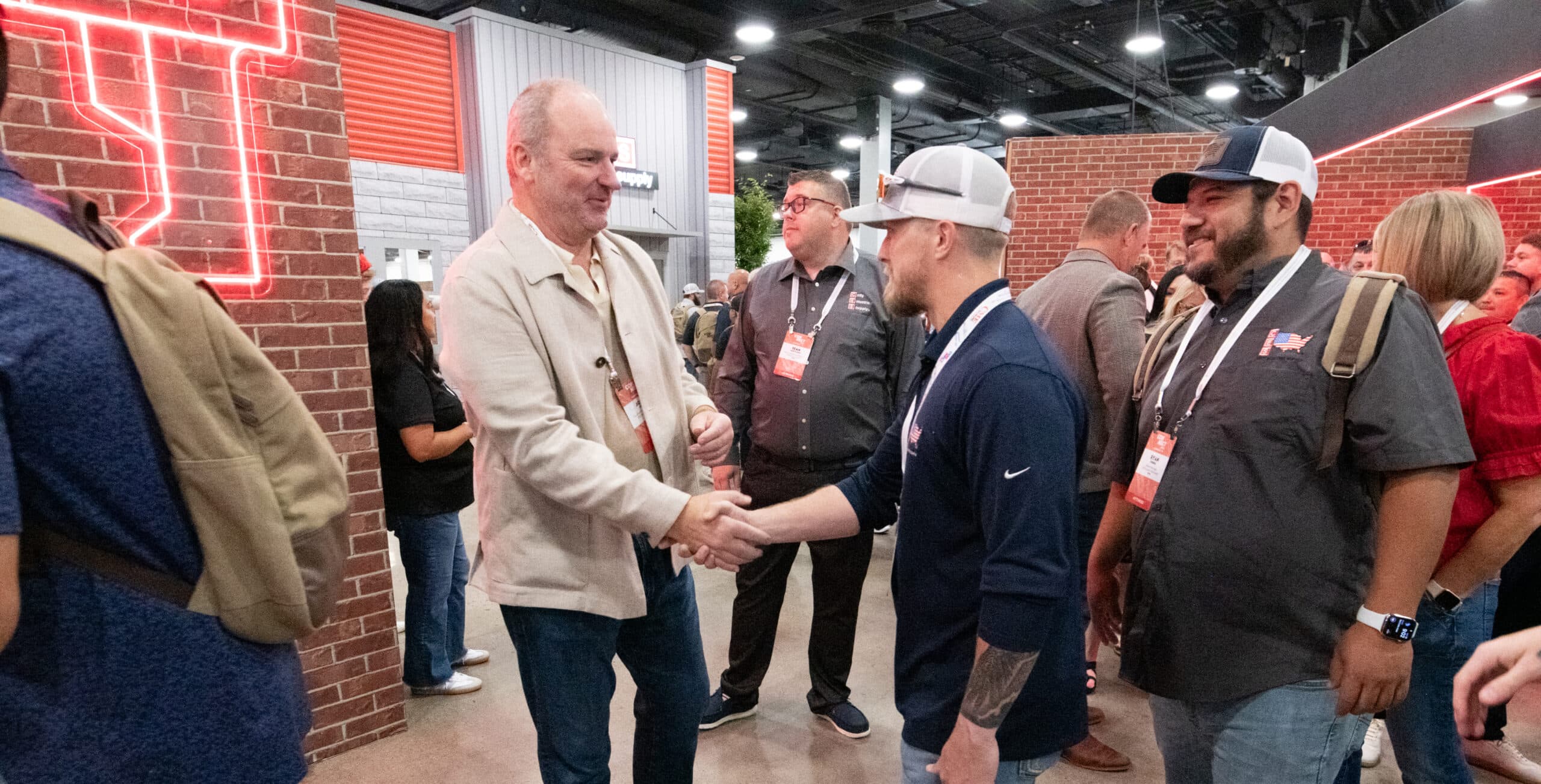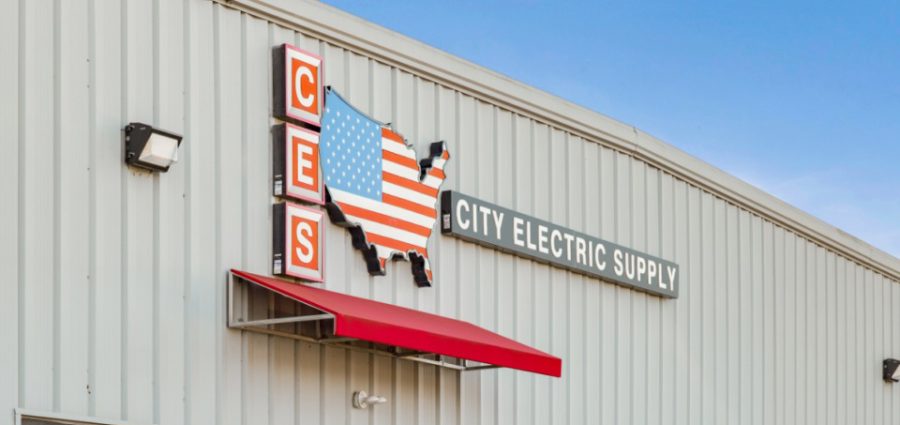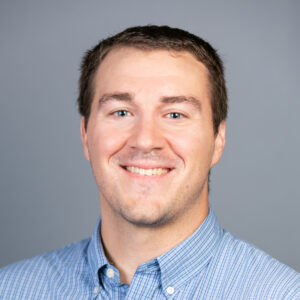Lead photo courtesy of City Electric Supply.
It can be difficult for distribution executives to discuss their leadership style, or how decision-making is delegated at the local level of their company. These leaders are often predominantly ‘do-ers’ and don’t have many opportunities to analyze these organizational components from a 30,000-foot view.
Thankfully, we found two who could shed light on these topics and more.
MDM attended City Electric Supply’s CES Connect 2024 event at the end of June at the Gaylord Opryland Resort & Convention Center in Nashville, Tennessee, where the electrical distributor hosted over 2,000 professionals and 60 vendor partners in the fifth iteration of the biennial event. See my general recap of the event here.
Premium: Inside City Electric Supply’s Multipurpose CES Connect Event (July)
There, we were able to sit down with Co-CEOs John Gray and Andrew Dawes — both 30-plus-year company veterans — during CES Connect’s “Counter Day” which gave attendees ample opportunity to visit and spend time with different company departments in a town-like “Connectville” setup.
Before our chat, Gray and Dawes spoke with numerous CES team members at the event’s “Influencer Bar” which allowed attendees to queue up to talk with various company leaders throughout the day in an informal way, about whatever topic they had in mind. Other executives that took part included Executive Chairman Thomas Hartland-Mackie, Global CEO Jeremy Saunders, Global CFO Phil Flaherty, and more.
Our discussion explored:
- Gray and Dawes’ leadership style;
- The internal value that CES Connect has for the company’s staff;
- Top industry changes in Gray and Dawes’ three-plus decades with the company;
- What’s on the horizon for CES branch expansion; and
- CES branch management independence
Dallas, TX-based City Electric Supply was No. 8 on MDM’s 2024 Top Distributors List for Electrical, Data and Security products, powered by over 700 branches and 5,000 associates across North America.
See our conversation below, edited for brevity.

MDM: Some business executives don’t mingle and converse with their front-line staff when they don’t have to. But here you two are at the CES Connect Bar chatting with a whole queue of team members for nearly an hour. What value do you place on connecting with nationwide associates in a company that has the scale of CES?
Dawes: We try to get out to our branches often. We’re making notes here as staff gives us suggestions and ideas. We never want to lose that. You can’t just make decisions based on numbers as they always represent something bigger. I get the best advice and best direction for the company from the people who are actually running the business. That’s why this event is so important.
Gray: I have worked for people in the past who never provided face-to-face time or an opportunity to give feedback — that could have been a result of certain individuals not feeling comfortable to discuss decisions they’ve made for the team. As a leader, you may not always make the right decisions, but you have to give your team the opportunity to provide feedback so you can explain why a decision was made or discuss how you can improve, together.
Dawes: We were on the main stage earlier for Q&A sessions in front of our 2,000+ team members, because we want to answer questions that they have. Some of the questions weren’t easy, and that’s fine.
Gray: The Q&A sessions allow us to get to know our team members better, and in return, let them get to know us a little better by having honest conversations.

MDM: Is there one piece of leadership advice that has always stuck with you throughout your career and you would recommend?
Gray: Be who you are. We all tend to question ourselves at times. But the truth is, you’ve earned the position you’re in through what you’ve achieved throughout your career. That doesn’t mean you’re not going to make a mistake. It doesn’t mean you’re not still going to learn along the way. You can’t change who you are based on your position — people will see right through that. Continue to do the right things, treat people as you want to be treated, be straight with them, and just be a good human being.
Dawes: One piece of advice that has always stuck with me is, focus on decisions with the end goal in mind — which, for us, is the customer.
MDM: The most interesting thing I’ve found about CES Connect is that, unlike other company conferences that are more purely focused on catering to suppliers, this event appears to equally promote internal resources. A CES branch manager can gain a ton of insights and best practices just from visiting with and learning from different departments represented here. What is the strategy behind that?
Dawes: In the end, all of our locations are individual P&L, right? They’re their own profit center. So it’s very important that they know how to get the most out of our supporting departments, and also that those departments connect with them so that they know they’re delivering what the branches need to serve our customers. This event connects those different entities in a more social and interactive way. It’s very much internal. We have some customers here, but it’s really an event meant to connect our team members with each other, our key vendors and our supporting departments. As we get bigger and bigger, communication is always a bit of a factor, right? CES Connect is an opportunity for us to keep our team members informed with company updates and future plans, celebrate our achievements, and show them the capabilities of our company.
Gray: That’s a big thing. I was talking to some of our team members from Michigan earlier today and asked a very similar question: ‘What do you get out of this?’ And they said it’s that they get to connect with people. They get to shake their hand and say, ‘Hey, I know we’ve never met, but I appreciate how you took care of my customer,’ or ‘Thank you for taking care of that problem.’
MDM: Alongside technology, what would you say is the biggest change you’ve seen in your decades in this industry?
Gray: There’s certainly been more consolidation among independent distributors, though there’s still a strong presence of them. The products haven’t fundamentally changed, but the model has. A lot of distributors have moved to a more centralized model, whereas our model has become stronger because of its decentralization. We believe that our model is the most efficient for our customers.
Dawes: And that model also fits our culture. I remember when the first fax machine came in and it was going to change everything. But it didn’t change tailored, personal customer service and relationships, which is the key to this industry.
Gray: When that first fax machine came in, I’m telling you, I was at a branch at the time and it felt like the end of the world. We had people saying, ‘This is going to kill us on our margins.’ But it was the first thing that enabled a contractor to only have to write down an order once and send it to multiple distributors for quotes. That was a bigger change than a lot of the technology we’ve seen since.
Dawes: We never want to replace that relationship and personal customer service. Technology has helped give our staff more time to do the more valuable things like spending time with customers
MDM: The CES North American branch count has grown from about 450 in 2018 to over 700 today, backed by more than 5,000 associates. Is there a branch count number in mind you’d like to achieve, or what goes into determining that footprint?
Gray: If we carry on at our current trajectory, we’ll have about 1,000 by 2030. When I first came over (to the U.S.), the idea of having 1,000 branches sounded pie-in-the-sky, but now it has become a realistic number. We can see it.
Dawes: We’ve got such great ranks of staff coming through who have joined our company. That’s the benefit of being able to grow. Growing through brick-and-mortar isn’t easy. It really comes down to people and managing and maintaining a culture.
MDM: Finishing up, is there anything about CES that those who aren’t familiar with the company might be surprised to know?
Gray: I don’t think many people realize how big we are. Sometimes there’s a real value in a sleeping giant perspective. But on the reverse side, I don’t think people realize how flexible we are for a company of this size. We are a big company, but we are exceptionally flexible. We make decisions quickly and get it done. We don’t manage by committee. We manage by responsibility.
Dawes: If you’re the kind of person that sees themselves running their own business or branch and want that autonomy and responsibility that comes with it, we’re a very good company for you. I think sometimes people don’t realize how much freedom they’d have in that role here. They assume that, as we get bigger, granular decisions will be dictated to them — but that’s not the case.
Gray: On the stage yesterday, I told the story of someone we bought a business from in California. He was moving to Georgia and told us that, after the transaction, he was hoping to work a branch counter or something along those lines. Within six months, he came back and said he wanted to open a branch for us. He kept saying how he had freedom to buy and sell what he wanted, could choose his style, and be his own P&L. He said he wished he’d been doing it years ago. When you hear stories like that, you realize the power that our model really has and why people here are inspired.



